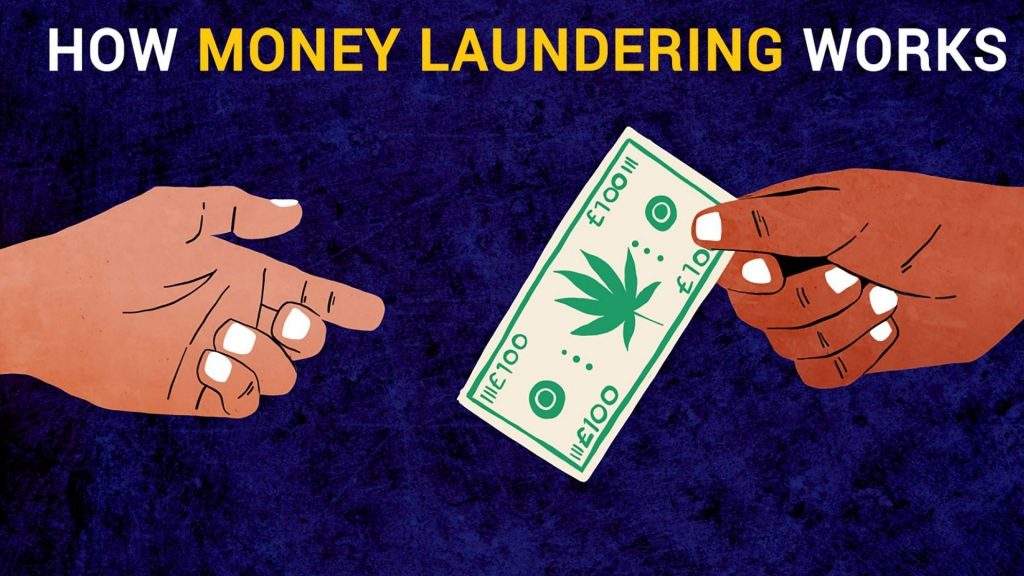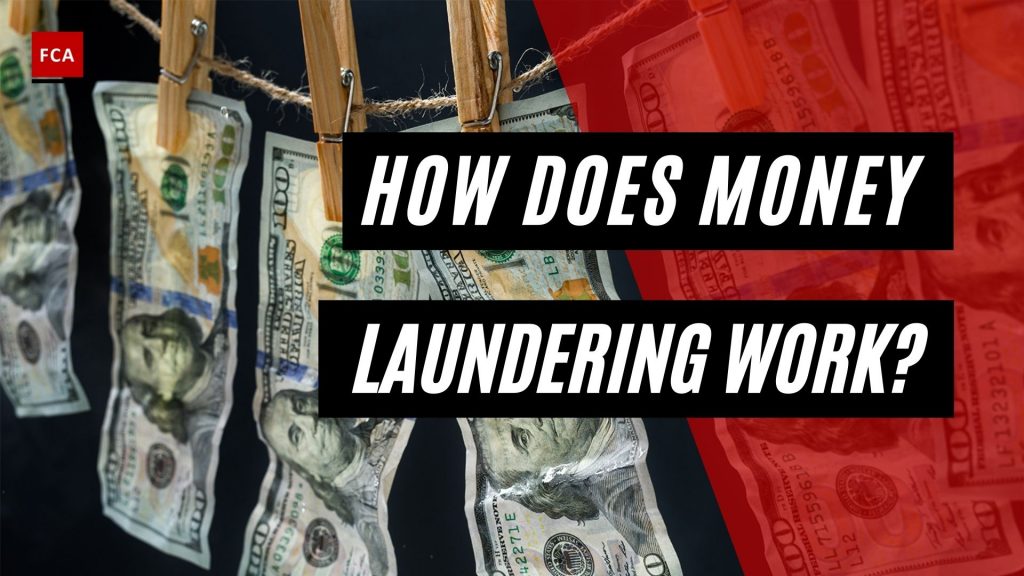How does money laundering work? Each day our world becomes faster and more complex. Just like each day, the methods used by money launderers become more sophisticated, and the transactions they use become more complex.

How Does Money Laundering Work?
Actually, there is no single method of money laundering. Money launderers don’t use playbooks. However, most money laundering operations go through certain stages: The so-called three stages of money laundering, which are Placement, Integration, and Layering. We will talk about each of them in a second.
Money laundering refers to the process by which criminals attempt to conceal the illicit origin and ownership of the proceeds of their illegal activities. Criminals use money laundering to disguise the proceeds of their crimes as funds of ostensibly legal origin. If successful, this process lends legitimacy to the proceeds, which the criminals retain control over. Money laundering can be a relatively simple process carried out at the local or national level, or it can be a highly sophisticated one that takes advantage of the international financial system and involves numerous financial intermediaries in a variety of jurisdictions.
Money laundering is required for two reasons: first, the perpetrator must avoid being linked to the crimes that resulted in the criminal proceeds (known as predicate offenses); and second, the perpetrator must be able to use the proceeds as if they were of legal origin. Money laundering, in other words, conceals the criminal origin of financial assets so that they can be freely used.
Three Stages Of Money Laundering
Placement, layering, and integration are the three stages of money laundering. The launderer introduces the illegal profit into the financial system during the placement stage. The launderer engages in a series of conversions or movements of funds during the layering stage to distance them from their source. Finally, during the integration stage, the funds are reintroduced into the legitimate economy.
To give you a bit of background: This three-stage model was derived from real money laundering cases that were unraveled by law enforcement and government agencies. And essentially, the process of money laundering happens in these three stages.
Stage 1: Placement
The first stage – the placement stage – represents the initial entry of the “dirty” cash or of the proceeds of crime into the legitimate financial system. A simple example would be a cash deposit at a bank.
But there are countless ways for the placement of cash. For example, cash could also be packed into a suitcase and smuggled to a country where it is easier to deposit cash with a bank.
Another technique is the Smurf technique. This technique involves the use of many individuals, which are Smurf’s, who exchange illicit funds in smaller, less conspicuous amounts for highly liquid items such as traveler cheques or bank drafts. Or the Smurfs deposit the funds directly into savings accounts. In practice, we have seen that, for example, ten smurfs could place over 1 million dollars into a bank account using this technique in less than ten working days.
Other examples for the placement of cash may include the repayment of loans or credit cards or purchasing gambling chips and placing bets on sporting events.
As we have learned when speaking about the history of money laundering, using legitimate cash-focused businesses to co-mingle dirty funds with legitimate sales is also a common method.
The placement of the cash serves two main goals:
1. It relieves the criminal of holding and guarding the cash, keeping in mind that criminal businesses, like drug dealing, generate vast amounts of bulky cash.
2. It places the money into the legitimate financial system.
There is a popular Netflix TV series called “Narcos” and in one scene, where two drug dealers are shown, the one says to the other: “Powder is fast, money is slow.” This hits the nail on the head.
Stage 2: Layering
The second stage – the layering stage – is the process of separating the criminal origin from the money by putting various layers in between them. The more layers a money launderer can build up, the harder it is for law enforcement to trace back the funds to the criminal source. From an economic perspective, the money launderer is challenged by keeping a balance between the costs for each layer and a sufficient degree of separation. The launderer must consider the time, effort, and costs that are associated with each layer.
Layering activities can include using multiple bank accounts, having professionals act as intermediaries, and transacting through corporations and trusts. Layering can also involve the use of complex financial transactions, such as letters of credit, stocks, and bonds. But layering can also involve non-financial transactions such as purchasing valuable assets, including art and jewelry.
All these transactions are designed to disguise the so-called paper trail or audit trail and provide anonymity for the criminals’ identity.
Layering usually involves a complex system of transactions designed to hide the source and ownership of the funds.
Once cash has been successfully placed into the financial system, launderers can engage in an infinite number of complex transactions and transfers designed to disguise the criminal source and to provide anonymity.
So, the primary objectives of the layering stage are to confuse any criminal investigation and place as much distance as possible between the criminal source of the funds and the funds themselves.
Stage 3: Integration
The third and final stage of the money laundering process is called the integration stage.
It is at this stage where the money is returned to the criminal. The money the criminal receives now appears to originate from legitimate sources. The criminal proceeds are now fully integrated into the financial system and can be used for any purpose.
There are many different ways in which the money can be integrated back with the criminal. The major objective at this stage is to reunite the money with the criminal in a manner that does not draw attention and appears to result from a legitimate source.
For example, the purchases of luxury goods such as upper-class property, artwork, jewelry, or high-end automobiles are common ways for the launderer to enjoy their illegal profits without necessarily drawing attention to themselves.
Mechanisms, Methods, And Instruments
The money launderer can use a variety of mechanisms and monetary instruments to conceal the illicit nature of the criminal proceeds at each stage of the process. Methods range from the simple purchase of luxury items to more sophisticated techniques involving the transfer of funds via a global network of banks and other financial institutions.
To dispose of the illicit proceeds, the launderer may use financial or nonfinancial mechanisms—that is, institutions that participate in the laundering process (knowingly or unknowingly). Working through banking institutions is the most common method, especially in the early stages of money laundering. Other sectors are used in addition to banks, including financial intermediation (the process of granting use or occupation of property for a specified period in exchange for a specified rent), leasing (the process of granting use or occupation of property for a specified period in exchange for a specified rent), and factoring (the practice of accepting accounts receivable as security for short-term loans).
Other financial institutions, such as wire transfer companies and exchange offices, are frequently used to conceal illegal gains. Finally, launderers make use of the gold market, casinos, and gambling establishments. The tools used in money-laundering operations also vary greatly. Aside from cash, the most commonly used instruments are stocks, life insurance policies, letters of credit, various types of bank checks, wire transfers, and precious metals.
In general, laundering small or episodic amounts of illicit proceeds necessitates a less sophisticated process than laundering larger amounts. At the local or national level, the most basic money-laundering methods are used. One of the most common is the mixing of legal and illegal funds. The latter are disguised as part of a company’s revenue and may be claimed to be the proceeds of a legitimate business. This has the advantage of providing a nearly instant explanation for dirty money. Restaurants and supermarkets, which handle a large amount of cash, are popular mechanisms for this purpose.

The Need To Launder Money
A major business problem for large, organized criminal enterprises – such as drug smuggling operations – is that they end up with large sums of cash that they must conceal in order to avoid legal authorities conducting investigations. The recipients of such large sums of money also do not want to have to declare it as income, resulting in massive income tax liabilities.
To address the issue of having millions of dollars in cash obtained through illegal activities, criminal enterprises devise methods of “laundering” the money in order to conceal the illegal nature of how it was obtained. In a nutshell, money laundering seeks to conceal illegally obtained funds by transferring them into a legitimate financial system, such as a bank or business.
“Washing” Money Through Investments
The financial markets provide criminals with a number of options for converting “dirty” money to “clean” money. One of the most common and basic schemes is to use a foreign investor to transfer illegally obtained funds into the legitimate financial system.
Assume a criminal organization has a million dollars in cash that needs to be laundered. A foreign investor is contacted, and the criminal organization strikes a deal with them. Using an investor from another country is just another way to hide the source of the funds.
The criminals give the investor a million dollars in cash. After receiving a portion of the money as a fee for services, the foreign investor invests the remainder in a legitimate domestic business owned by the criminal organization, which is frequently a shell company.
Shell companies are companies that have a lot of money but aren’t directly involved in any business that sells goods or services. The funds are used to invest in other businesses, most of which are legitimate and owned by the criminal organization.
Final Thoughts
Money laundering is the act of concealing money that comes from a dirty, illegal Source A so that it appears to come from a clean, legal Source Z. When funds from illegal activity are integrated into the financial system, they appear to belong to legitimate sources such as drug trafficking, financing terrorism, arm and weapon smuggling, prostitution, and human trafficking. Criminals accomplish this by concealing the heads or moving the money to a location where it is less likely to attract attention. Placement, Layering, and Integration are the stages of money laundering involved in this process.








